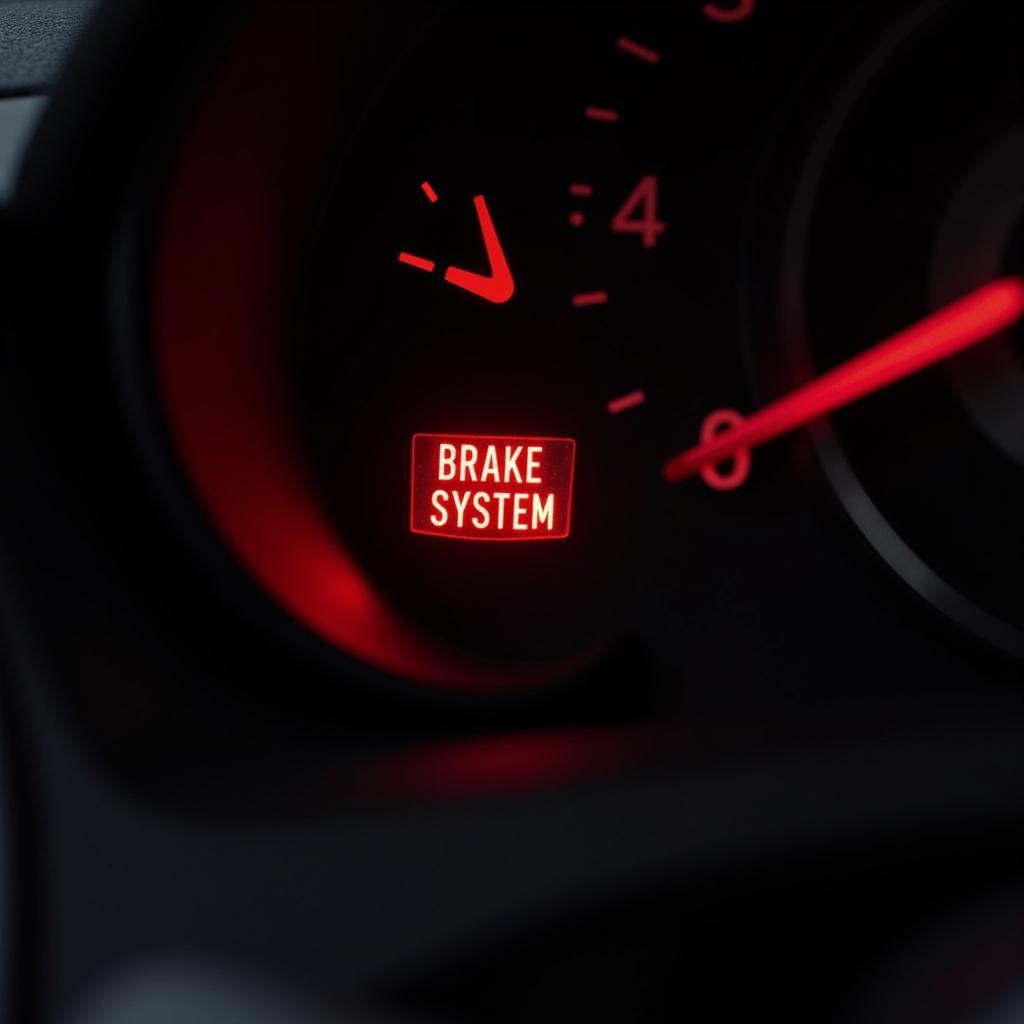The Golf 6 is a popular and reliable car, but like all vehicles, it can experience issues. One common problem that Golf 6 owners may encounter is a brake pad warning light. This light can be a bit alarming, but it’s usually not a cause for immediate panic. This article will delve into the reasons why this warning might appear, the symptoms you might notice, and how to address the problem.
Understanding the Golf 6 Brake Pad Warning Light
The brake pad warning light on your Golf 6 is a vital safety feature designed to alert you when your brake pads are nearing the end of their lifespan. This light indicates that the brake pads have worn down to a critical level and need to be replaced soon. Ignoring this warning can lead to serious consequences, including brake failure.
Common Causes of the Brake Pad Warning Light
Several factors can trigger the brake pad warning light on your Golf 6. Here are the most common culprits:
1. Worn Brake Pads
This is the most straightforward reason for the brake pad warning light. As you use your brakes, the friction material on your brake pads wears down gradually. When the pads reach a certain level of wear, the sensor built into the brake pad assembly triggers the warning light.
2. Faulty Brake Pad Sensor
Sometimes, the brake pad sensor itself can malfunction, triggering the warning light even if the brake pads are still in good condition. This can happen due to a broken wire, corrosion, or a faulty sensor.
3. Other Brake System Issues
Although less common, other brake system issues can sometimes cause the brake pad warning light to illuminate. These could include:
- Low brake fluid: A low brake fluid level can also trigger the warning light, as the fluid is essential for proper brake operation.
- Faulty brake caliper: A malfunctioning brake caliper can prevent the brake pads from retracting correctly, leading to excessive wear.
- Stuck brake pads: If the brake pads get stuck in a partially applied position, it can cause premature wear and trigger the warning light.
Recognizing Symptoms of Worn Brake Pads
Besides the warning light, other symptoms may indicate that your brake pads are getting worn down. These include:
- Squealing or grinding noises: Worn brake pads can create a high-pitched squealing or grinding noise when you apply the brakes. This sound usually becomes more pronounced as the pads wear further.
- Vibrating brake pedal: If the brake pads are worn unevenly, you may feel vibrations in the brake pedal when you press it.
- Increased braking distance: Worn brake pads can lead to a longer braking distance, as they have less friction material to slow down the vehicle.
What to Do When the Brake Pad Warning Light Comes On
If you see the brake pad warning light on your Golf 6, don’t panic, but take immediate action. Here’s what you should do:
- Pull over safely: Find a safe place to stop your car.
- Check your brake fluid level: Make sure that your brake fluid level is adequate. If it’s low, you need to address that issue as well.
- Inspect your brake pads: If you are comfortable doing so, you can inspect your brake pads yourself. Look for excessive wear, cracks, or damage.
- Contact a mechanic: Regardless of whether you inspected the brake pads or not, you should contact a qualified mechanic for a professional inspection and repair.
The Importance of Regular Brake Maintenance
To avoid encountering the dreaded brake pad warning light, it’s essential to have your brake system regularly inspected and maintained. “It’s crucial to have your brakes inspected at least once a year, or even more frequently if you drive a lot in harsh conditions,” advises John Smith, a certified automotive technician with over 20 years of experience. “This can help catch any problems early on and prevent them from becoming more serious.”
Replacing Brake Pads
When your brake pads need replacing, it’s essential to use high-quality brake pads that are compatible with your Golf 6 model. You can choose from various types of brake pads, including:
- Standard brake pads: These are the most common type and provide good braking performance at an affordable price.
- Ceramic brake pads: These pads offer quieter operation and less brake dust but are generally more expensive than standard pads.
- Semi-metallic brake pads: These pads provide excellent stopping power and durability but can be noisier than standard pads.
When replacing brake pads, it’s advisable to have the brake fluid flushed and replaced as well. This ensures that the brake system is working optimally.
Conclusion
The brake pad warning light on your Golf 6 should never be ignored. It’s a crucial safety feature that alerts you to a potential problem that could lead to brake failure. By understanding the causes, symptoms, and solutions for this warning, you can ensure the safety of yourself and others on the road. Remember to have your brakes inspected regularly to prevent this warning light from appearing in the first place.

